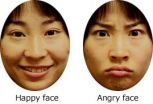(Press-News.org) DURHAM, N.C. -- Coaching patients with chronic obstructive pulmonary disease to manage stress, practice relaxation and participate in light exercise can boost a patient's quality of life and can even improve physical symptoms, researchers at Duke Medicine report.
In a study published online Sept. 25, 2014, in the journal Psychosomatic Medicine, Duke researchers examined how telephone-based coaching could help patients with chronic obstructive pulmonary disease, or COPD, a progressive disease that limits airflow in the lungs.
About 15 million Americans have COPD, and it is now the third leading cause of death in the U.S., according to the Centers for Disease Control and Prevention.
"COPD is an increasingly important public health problem. It's a debilitating and distressing illness," said author Scott Palmer, M.D., MHS, an associate professor of pulmonary medicine at Duke and medical director of the project. "Our work has established an innovative and important intervention that could improve patient quality of life. Although it has not translated into improved survival rates, this approach is worthy of further investigation."
During the five-year study, which was based at Duke University Health System and Ohio State University, 147 COPD patients participated in coping skills training. Psychologists provided regularly scheduled phone sessions, offering patients and their caregivers general information about COPD, step-by-step instruction in relaxation techniques such as deep breathing, tensing and releasing muscles, and ways to manage their reactions to stressful events.
For comparison, psychologists provided a separate group of 151 patients with phone consultations on topics including medication and nutrition. They did not teach specific coping techniques.
Participants who received coping skills training reported improvements in their overall mental health, and lessened depression, anxiety, fatigue and shortness of breath when compared to the control group.
Although there were no improvements in COPD-related hospitalizations or deaths, the study suggests that the low-cost approach could enhance quality of life, reduce distress and somatic symptoms, and improve physical functioning for patients.
"Patients with COPD do not often seek mental health services," said James Blumenthal, Ph.D., the J.P. Gibbons Professor of Behavioral Medicine in the Department of Psychiatry and Behavioral Sciences at Duke. "Given the other issues patients face with this illness, they may not feel as though mental health treatment is a priority.
"This model offers privacy and minimal inconvenience," Blumenthal said. "This could be a valuable treatment for patients with other chronic conditions in which traditional mental health services are not easily accessible, or when patients are reluctant to seek such services."
INFORMATION:
In addition to Blumenthal and Palmer, study authors included Patrick J. Smith; Francis J. Keefe; Karen Welty-Wolf; Stephanie Mabe; Tereza Martinu; Julie J. Johnson; Michael A. Babyak; Virginia F. O'Hayer and Michael Durheim at Duke; Charles F. Emery and Philip T. Diaz at Ohio State University; and Donald Baucom at the University of North Carolina-Chapel Hill
The National Institutes of Health provided grant support (HL 065503).
Coping techniques help patients with COPD improve mentally, physically
2014-09-25
ELSE PRESS RELEASES FROM THIS DATE:
Solar cell compound probed under pressure
2014-09-25
Washington, D.C.— Gallium arsenide, GaAs, a semiconductor composed of gallium and arsenic is well known to have physical properties that promise practical applications. In the form of nanowires and nanoparticles, it has particular potential for use in the manufacture of solar cells and optoelectronics in many of the same applications that silicon is commonly used.
But the natural semiconducting ability of GaAs requires some tuning in order to make it more desirable for use in manufacturing these types of products. New work from a team led by Carnegie's Alexander Goncharov ...
A wriggly solution to a first-world problem
2014-09-25
Australian researchers have achieved groundbreaking results in a clinical trial using hookworms to reduce the symptoms of celiac disease.
The results are also good news for sufferers of other inflammatory conditions such as asthma and Crohn's disease.
In the small trial run over a year, 12 participants were each experimentally infected with 20 Necator americanus (hookworm) larvae.
They were then given gradually increasing doses of gluten – beginning with just one-tenth of a gram per day (the equivalent of less than a one-inch segment of spaghetti) and increasing in ...
Study finds global sea levels rose up to 5 meters per century at the end of the last 5 ice ages
2014-09-25
Land-ice decay at the end of the last five ice-ages caused global sea-levels to rise at rates of up to 5.5 metres per century, according to a new study.
An international team of researchers developed a 500,000-year record of sea-level variability, to provide the first account of how quickly sea-level changed during the last five ice-age cycles.
The results, published in the latest issue of Nature Communications, also found that more than 100 smaller events of sea-level rise took place in between the five major events.
Dr Katharine Grant, from the Australian National ...
Cryptogenic strokes may find explanation in the heart
2014-09-25
More than half of the patients who have suffered a stroke with no well-defined aetiology have an enlarged left atrial appendage of the heart, according to a Finnish study. The results indicate that the enlargement of the left atrial appendage may be an independent risk factor of strokes with cardiac origin.
Mr Mikko Taina, Licentiate of Medicine, presented the results in his doctoral thesis at the University of Eastern Finland.
Stroke is the leading cause of long-term disability and a major burden on health-care resources worldwide. Stroke is responsible for 10 per ...
Osteoarthritis of the hip: Appropriate exercise therapy can alleviate symptoms
2014-09-25
Osteoarthritis of the hip is a progressive degenerative disorder affecting the hip joints, which affects one in 10 adults. The symptoms range from pain after intense joint loading to morning pain/stiffness and impaired mobility in everyday life. To date, no cure exists. Appropriate exercise therapy can, however, delay progression of the disease and alleviate symptoms, as shown in a randomized controlled study reported by Inga Krauß et al in Deutsches Ärzteblatt (Dtsch Arztebl Int 2014; 111: 592–9).
The physicians treated patients with hip osteoarthritis according to the ...
Human papilloma virus vaccination provides long-term protection
2014-09-25
Every year, 11.2 of every 100 000 women in Germany develop cervical cancer. Persistent infection with a high-risk human papillomavirus (HPV) type is a necessary prerequisite for the development of dysplasia and neoplasia of the cervix. HPV vaccination has been a subject of heated debate since it was incorporated into the vaccination recommendations of the German Standing Committee on Vaccination (STIKO) in 2007. This edition of Deutsches Ärzteblatt International (Dtsch Arztebl Int 2014; 111: 584–91) reveals that Yvonne Deleré of Berlin's Robert Koch Institute et al. have ...
Brains not recognizing an angry expression
2014-09-25
Inattention, hyperactivity, and impulsive behavior in children with ADHD can result in social problems and they tend to be excluded from peer activities. They have been found to have impaired recognition of emotional expression from other faces. The research group of Professor Ryusuke Kakigi of the National Institute for Physiological Sciences, National Institutes of Natural Sciences, in collaboration with Professor Masami K. Yamaguchi and Assistant Professor Hiroko Ichikawa of Chuo University first identified the characteristics of facial expression recognition of children ...
Chemists recruit anthrax to deliver cancer drugs
2014-09-25
CAMBRIDGE, MA -- Bacillus anthracis bacteria have very efficient machinery for injecting toxic proteins into cells, leading to the potentially deadly infection known as anthrax. A team of MIT researchers has now hijacked that delivery system for a different purpose: administering cancer drugs.
"Anthrax toxin is a professional at delivering large enzymes into cells," says Bradley Pentelute, the Pfizer-Laubauch Career Development Assistant Professor of Chemistry at MIT. "We wondered if we could render anthrax toxin nontoxic, and use it as a platform to deliver antibody ...
Scientists develop tool to help communities stay environmentally and socially 'healthy'
2014-09-25
Geographers at the University of Southampton have developed a new way to measure the 'health' of poor regional communities. They aim to improve the wellbeing of people by guiding sustainable development practices to help avoid social and environmental collapse.
The researchers have pioneered a methodology that examines the balance between factors such as; standards of living, natural resources, agriculture, industry and the economy. The results help identify critical limits, beyond which regions risk tipping into ecological and social downturn, or even collapse.
The ...
Experts at LSTM use modelling approach to assess the effectiveness TB diagnostics
2014-09-25
Experts at LSTM have used a novel modelling approach to project the effects of new diagnostic methods and algorithms for the diagnosis of tuberculosis (TB) recently endorsed by the World Health Organization (WHO), looking at the patient, health system and population perspective in Tanzania.
In a paper published in the journal The Lancet Global Health, LSTM's Ivor Langley and Professor Bertie Squire worked with colleagues from the Institute of Epidemiology and Preventative Medicine, National Taiwan University; National Tuberculosis and leprosy Programme, Tanzania; Department ...


